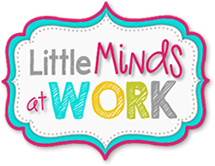
Tara West from Little Minds at Work and I are so, so excited to begin our book club on Close Reading in Elementary School! If you’ve heard of close reading before, but you’re not really sure of what it is OR if you’re just beginning to become familiar with close reading, this book study is PERFECT for you.
Already have the book and ready to begin? Excellent! Just joining us? It’s not too late. You can pick up the book by clicking in the link below!
Before beginning the book study discussion, I wanted to first share this quick 2.5 minute video that helps to explain exactly what close reading is. Just click on the video below to watch.

Wow! This book truly jumps RIGHT in. I hope you made it through without feeling overwhelmed and confused. If you did, we’re here to help you out!
Chapter One is all about the importance of exposing students (at ALL ages…NOT just intermediate and middle school children!) to complex texts. The text states, “Education Week reported in 2010 that 1.3 MILLION children drop out of school annually mostly due to students own perceived lack of literacy skills.” That is FRIGHTENING and sad!
There’s been an enormous shift in the complexity of texts that we are putting in front of our students. The length of sentences, number of multisyllabic words, and new and rich vocabulary have decreased in texts found in grade k-12; however, the complexity of college textbooks have INCREASED. This gap leaves students unprepared and frustrated! If we can expose students to more rich, meaningful, and meaty texts at an early age, we can help bridge this gap.
Even after reading the chapter, you might still be asking yourself some of the following questions. We’re here to hold your hand and answer them as best as we can.
How do I choose complex texts for my students? Doesn’t my reading curriculum already provide me with complex texts?
How do I choose complex texts for my students?
Complex texts are books that require students to ask and answer questions and MAKE MEANING FROM THE TEXT! When selecting a text for a close read, you want to make sure you consider the following:

The Common Core uses this triangle model, which highlights the three major parts of choosing a complex text. However, the triangle leaves me wondering what in the world these terms mean!
This s’more makes so much more sense to me! Ha!
Doesn’t my reading curriculum already provide me with complex texts?
The honest answer is probably not. I’ve found that most reading programs primarily provide students with texts that are simple and easy to decode (which IS important!), but don’t provide enough “meat” to really make meaning from. I think you’ll find that SOME of the texts in your curriculum CAN be used for close reads, but that you’ll have to look elsewhere too!
I made this little checklist sheet to help you determine if the text is complex enough or not. I suggest placing this in an easy to access spot so that you can use it when you are trying to select appropriate texts for close reading. Tara provides you with some great websites that give you information about the quantitative indicators. Check them out here at her blog!
Click on the sheet below to download it:
Need some close reading materials? Check out the close reading resources I have in my shop.
Are you a kindergarten teacher? Check out Tara’s close reading resources!

Be sure to go read what Tara had to say about Chapter One!
Here is our book study schedule:

You will notice that we will be "skipping" over chapter two on the book study, but please go ahead and read through that chapter on your own. It has great information on how close reading got started, but we know you are teachers and your time is limited! Our goal is to get you comfortable with close reads BEFORE the back to school craze!
If you are joining us for the book study over at your blog feel free to grab the button and link up below!






This is great, Lyndsey! You helped to make it SO much clearer! Love the graphics =)
ReplyDeleteJennifer
Hey Lyndsey,
ReplyDeleteI am a fourth grade teacher and, after reading your blog post about this book, I also picked it up. Even though I am not a kindergarten or first grade teacher, can I link up with you on the next chapters?
Thanks, Alley
The magnifying glass is so cute for getting closer and digging deeper. :)
ReplyDeleteLoving the book study! The s'more graphic is fantastic!
ReplyDeleteRowdy in First Grade